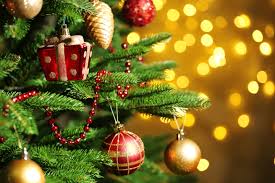Interesting Facts about Christmas Songs

With the conclusion of Thanksgiving comes the arrival of Christmas songs. As the leaves fall off the trees and temperature approaches the freezing point, much of the same holiday songs we heard last year return to remind us of the Christmas season. There are many interesting facts about these songs Americans love to hear, and some are quite surprising.
First, which songs are most popular? To answer this question, we can refer to Billboard Magazine’s chart of the top 100 holiday songs during the Christmas week of 2015. Here is the list of top 25 songs on that list, with the artists in parenthesis:
- All I Want For Christmas Is You (Mariah Carey)
- Rockin’ Around The Christmas Tree (Brenda Lee)
- The Christmas Song (Nat King Cole)
- A Holly Jolly Christmas (Burl Ives)
- Mary, Did You Know? (Pentatonix)
- Jingle Bell Rock (Bobby Helms)
- Christmas Eve (Trans-Siberian Orchestra)
- Rudolph The Red-Nosed Reindeer (Gene Autry)
- Feliz Navidad (Jose Feliciano)
- Let It Snow, Let It Snow, Let It Snow (Dean Martin)
- White Christmas (Bing Crosby)
- It’s The Most Wonderful Time Of The Year (Andy Williams)
- It’s Beginning To Look A Lot Like Christmas (Michael Buble)
- Last Christmas (Wham!)
- Blue Christmas (Elvis Presley)
- Wonderful Christmas Time (Paul McCartney)
- Happy Xmas (John Lennon)
- Christmas Canon (Trans-Siberian Orchestra)
- Mistletoe (Justin Bieber)
- Sleigh Ride (The Ronettes)
- Oh, Come All Ye Faithful (Bing Crosby)
- Here Comes Santa Claus (Elvis Presley)
- Linus & Lucy (Vince Guaraldi Trio)
- Santa Tell Me (Ariana Grande)
- Christmas Time Is Here (Vince Guaraldi Trio)
Of the 25 songs, how many are about Christmas? 14 songs have the word “Christmas” in their title, if you include “Feliz Navidad” (“Merry Christmas” in Spanish) and “Happy Xmas” by John Lennon. 5 additional songs include “Christmas” in the lyrics: “Rudolph The Red-Nosed Reindeer,” “It’s The Most Wonderful Time Of the Year,” “Mistletoe,” “Here Comes Santa Claus,” and “Santa Tell Me.” Of the remaining 6 songs, two mention figures associated with Christmas: “Mary, Did You Know?” and “Oh, Come All Ye Faithful,” which mentions Christ in the lyrics. “Linus & Lucy” is an instrumental jazz piece from the 1965 TV special, “A Charlie Brown Christmas.” The final three songs, “Jingle Bell Rock,” “Let It Snow, Let It Snow, Let It Snow” and “Sleigh Ride” are not technically Christmas songs, but better classified as “Holiday” songs, which are more about winter rather than Christmas. In any case, all the songs are successful in creating the atmosphere of the holiday season.
Are any Christmas songs written by non-Christians? It would be surprising to some to learn that about a third of the holiday songs (8 of 25) were composed by Jewish artists. Although two of these songs (“Let It Snow, Let It Snow, Let It Snow” by Sammy Cahn/Jule Styne, and “Sleigh Ride” by Mitchell Parish) are not technically Christmas songs, the remaining 6 songs mention Christmas in the title or in the lyrics. In fact, Johnny Marks, a Jewish songwriter from Mount Vernon, New York, is responsible for 3 of these songs (“Rockin’ Around The Christmas Tree,” “A Holly Jolly Christmas,” and “Rudolph The Red-Nosed Reindeer.”)
Are any popular Christmas songs written in the 21st century? One of the appeals of holiday songs is that they are nostalgic and may remind the listener of previous holiday seasons. This may be the reason why very few “new” Christmas songs have become popular. In fact, only 2 of the 25 songs were written in the 21st century: “Mistletoe” (2011) and “Santa Tell Me” (2014). “Mary, Did You Know?” by Pentatonix was recorded in 2014, but the original version by Kenny Rogers and Wynonna Judd was recorded in 1997. Additionally, 13 of the 25 songs were recorded more than 50 years ago, and 10 of the artists responsible for the hits are no longer alive. Finally, 3 of the songs were originally written before 1900 (“Christmas Eve,” “Christmas Canon,” and “Oh, Come All Ye Faithful.”). As the tradition for the holidays is timeless, the songs people enjoy cross many generations.




